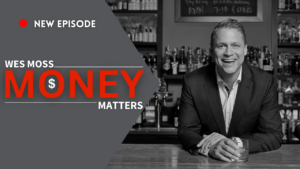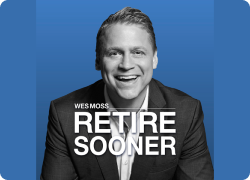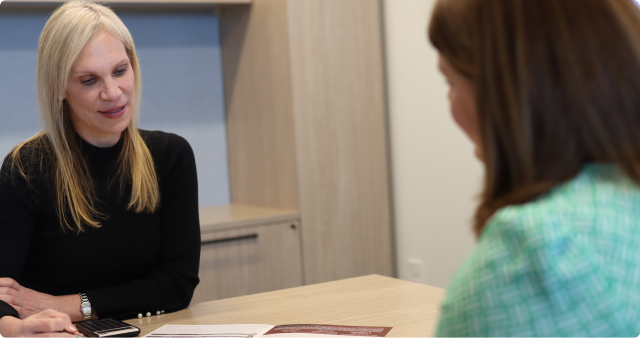The financial world recently lost one of its great innovators, John Bogle, who died at age 89.
Bogle was the father of index investing and the founder of financial services giant Vanguard. He was also a pioneer and crusader — a champion of accessible investing for the average American during a time when mutual fund fees were prohibitive for many small investors. By shedding light on these high-cost fees and doggedly touting the benefit of owning baskets of companies, Bogle created index investing as we know it today. His efforts also laid the groundwork for exchange-traded funds (ETFs) to emerge.
I was lucky enough to spend some time with Bogle in 2009 and to discuss his core philosophies about the investment world. Many of those beliefs played a significant role in shaping my approach to investing.
Here are some of the things I learned from my conversation with John Bogle. As you read over my takeaways, keep this Bogleism in mind: “Investing is not nearly as difficult as it looks. Successful investing involves doing a few things right and avoiding serious mistakes.”
1. The basics: Bogle and I agree that there’s no substitute for getting the basics right from the beginning. When we talk about the basics, one fundamental is determining your risk tolerance and allocating your assets accordingly.
While Bogle was a proponent of the Own Your Age In Bonds (OYAIB) rule (which states that if you’re 30 years old, you own 30 percent in bonds, age 40, then 40 percent in bonds, and so on), I created what I feel is a more modern interpretation of this rule due to the current bond market climate.
That’s because, during Bogle’s time, the bond market was in a different place, with bonds offering interest rates in the 6 to 8 percent range. Being “bond heavy” was quite all right in that environment. But in recent years, we have seen an erosion of interest rates down to lower levels, making too much exposure to bonds perhaps overly conservative for many investors. While the concept of being more conservative in your investments as you age makes sense, if you have a long horizon ahead of you, it may be better to take on more risk, if your risk tolerance allows for it.
My version of OYAIB is called the 15/50 Rule, and it simply says that if you believe you have 15 years or more on this planet, at least 50 percent of your holdings should be in stocks, and the remaining balance in various bonds and cash.
2. Time horizon: Another favorite quote from Bogle sums up this point perfectly: “Time is your friend; impulse is your enemy.” During my conversation with Bogle, he said that to invest for less than 10 years is speculation.
His advice is to stay the course and be in for the long haul. When it comes to investing, making decisions based upon emotion will generally lose. You should invest for the long term. Your returns, therefore, will generate from businesses growing over time. I agree with Mr. Bogle.
3. Investment return: Bogle believed that return on your investments is about business, not stocks. “In the long run … it is the dividend yield … and a subsequent earnings growth of stocks in the future that provide the real investment return. So, if we add the two together, you will get the investment return for stocks in the future.”
For example, if you have a dividend yield of 3 percent plus earnings growth of 5 percent, your total investment return is 8 percent. It’s a great reminder to focus on the underlying business, not merely the activity of the company’s stocks. If a business is creating value, we should reap the benefits over time.
4. Valuation and imbalances: Both Bogle and I are true believers that there are a few periods of time over your investing career where the market presents extreme value or extreme risk. “There are times, maybe four to six times … in an investor’s lifetime when the market is either absurdly expensive or absurdly cheap.”
Think back to 1999 when stocks were trading at over 30x earnings. Therein were great imbalance and great risk. Then, the tech bubble burst and the market fell 52 percent, again imbalance and creating great opportunity. Still, time in the market beats timing the market.
5. Avoid emotional pulls: Ah, fear and greed — they are powerful emotions, but they don’t make for rational decision-making. Nor do “excited optimism or pessimism,” as Bogle says. Balance is the key when it comes to investing, not only in your portfolio but in your emotional reactions to market ups and downs.
6. Relentless Rules of Humble Arithmetic: Bogle was talking about mutual funds when he talked about humble arithmetic. Some mutual funds are still operating the old way and are egregiously expensive. Remember, Bogle basically took a world where investors were blindly paying 3 to 3.5 percent a year and made those extraordinarily high fees a scarlet letter of investing.
His efforts helped bring investing costs down dramatically. His goal was to get 3 percent down to 1 percent or less, so investors stood a chance to win out. This was way back in 1976 when the first index fund was launched.
7. Fee-only advice: Based on research, analysis and testing, Vanguard concluded that, yes, there is a quantifiable increase in return from working with a financial advisor. Vanguard calls this advantage the Advisor’s Alpha. When certain best practices are followed, that Alpha benefit can be in the 3 percent per year range.
8. Investing in the U.S.: Our great country is still the best place to invest in the long run, for both stocks and bonds, according to Bogle. Even though international investing is available at Vanguard (and there is money there), Bogle reminds us that the U.S. has always been the best place to invest, and it still is.
“Press on, regardless,” said John Bogle. This is solid advice in investing and in everyday life. So, my final word today is that we need to press on, friends, regardless.
To hear my full interview with John Bogle, go to wesmoss.com, and click on the “Radio” link.
Click here to read the original AJC article.
DISCLOSURE
This information is provided to you as a resource for informational purposes only. It is being presented without consideration of the investment objectives, risk tolerance or financial circumstances of any specific investor and might not be suitable for all investors. Past performance is not indicative of future results. Investing involves risk including the possible loss of principal. This information is not intended to, and should not, form a primary basis for any investment decision that you may make. The information contained in this piece is not considered investment advice or recommendation or an endorsement of any particular security. Further, the mention of any specific security is solely provided as an example for informational purposes only and should not be construed as a recommendation to buy or sell. Always consult your own legal, tax or investment advisor before making any investment/tax/estate/financial planning considerations or decisions.








